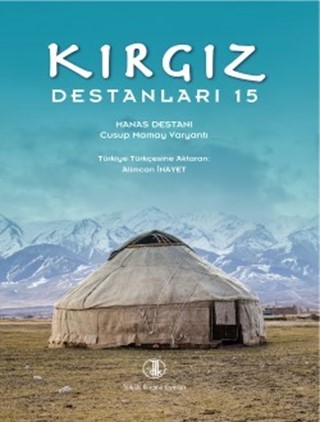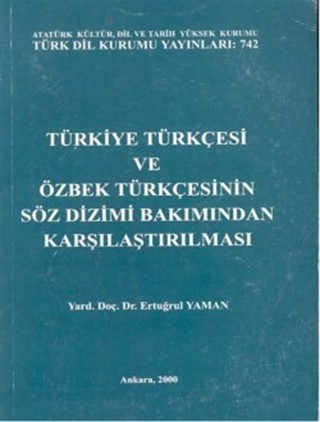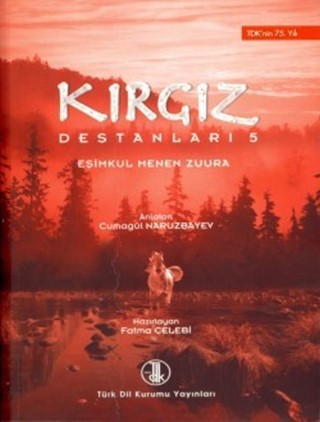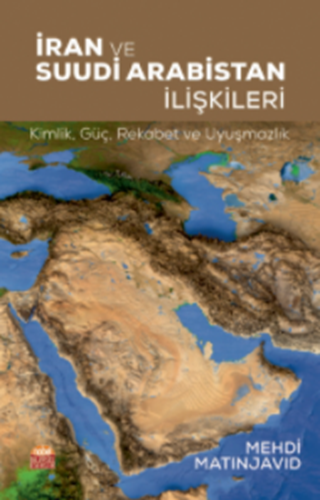
Kırgız Destanları XV / Kyrgyz Epics XV

Türkiye Türkçesi ve Özbek Türkçesinin Söz Dizimi Bakımından Karşılaştırılması / Syntax Comparison of Uzbek and Turkish
This work consists of three parts. Turkey Turkish and Uzbek Turkish Comparison of the issues discussed in Terms of Syntax. In the introduction, the root unity of the Turkish language and its dialects, Turkey Turkish’s involvement of the Uzbek language, terms, and approaches related to syntax and word groups were main topics. In the first chapter titled Word Groups, the existing information about the definition of the concept and the methods of analyzing the word groups were mentioned, and then the word groups such as noun phrase, adjective clause, adjective-verb group, adverb-verb group, the noun-verb group were compared in the mentioned languages. In the second chapter, where the sentence is dealt with, after the concept of the sentence and the classification of the sentence, the sentences are compared in terms of their elements (subject, predicate…) and types (simple, compound, noun, verb, regular, inverse, positive, negative…).

Kırgız Destanları V: Eşimkul Menen Zuura / Kyrgyz Epics V: Eşimkul Menen Zuura
“Kyrgyz Epics 5” is the 20th of the works under the “Detection of Turkish World Epic, Transferring to Turkey Turkish and Publishing Project" headed by Prof. Dr. Fikret Türkmen. In this work named "Kyrgyz Epics 5: Eşimkul Menen Zuura", the epic of Eşimkul Menen Zuura is discussed. This heroic epic of 7062 lines has social characteristics as it includes issues such as struggling to have children, marriage with sheikh, saint, folk doctor, marriage ceremony, inheritance, postpartum celebrations, and love. There is only one copy of the epic written in the Latin alphabet and this variant is in the Manuscripts Archive in Kyrgyzstan. In the introduction of this study, which deals with the epic of Eşimkul Menen Zuura, there is a summary of the epic, following this summary, the transcription text of the epic and the text transferred to Turkish are included. The last part of the book is devoted to the Place and Person Names Index.

Küresel Yer Değiştirmenin Sosyal Boyutu AFGAN SIĞINMACILAR / Social Dimension of Global Displacement AFGAN REFUGEES
Throughout the history of humanity, Anatolian geography has embraced the people who left their lands and migrated to Anatolia as much as possible, for fear of being persecuted or killed. Today, the Republic of Turkey, Anatolia continues to maintain this property. The disturbances that have arisen due to the political events and war in our neighboring geography, revealing political and economic instabilities, forcing the peoples of the region to move. After this situation, societies that cannot receive protection services against possible situations in the countries they live in try to secure their lives individually or collectively by taking shelter in other countries. As a result of this situation, Afghans are the second largest group among citizens of other countries who contact public institutions in order to obtain international protection application and status. In this study, the social, legal and economic conditions of Afghans were examined and some suggestions were made for improving their social welfare within the framework of social work. This work is dedicated to all people who had to leave their country for whatever reason.

İRAN VE SUUDİ ARABİSTAN İLİŞKİLERİ: Kimlik, Güç, Rekabet ve Uyuşmazlık / IRAN AND SAUDI ARABIA RELATIONS: Identity, Power, Competition and Conflict
This book evaluates the reasons for the disputes in the relations between the Islamic Republic of Iran and the Kingdom of Saudi Arabia. In the book, the role of sectarian identity in the conflicts between the two countries is questioned; It reveals that sectarianism is not the main source of the problems between Tehran and Riyadh, but it is used as a political weapon in line with geopolitical and geostrategic goals. Political-sectarian and geo-sectarian phenomena constitutes the main idea of the book, which emerged as a result of the social construction, manipulation and instrumentalization of sectarian identity by the leaders and ruling elites of Iran and Saudi Arabia. How Saudi Arabia, which does not find the USA's remote balancing strategy sufficient, attempts to rein in and balance Iran, is examined in detail in the book.
